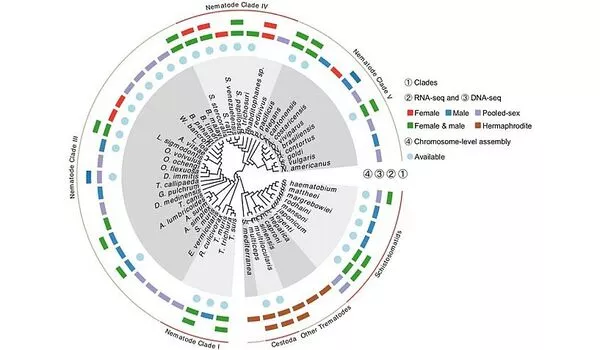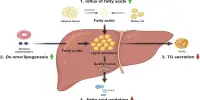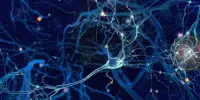The research group of Qi Zhou from the University of Vienna and Zhejiang University sheds light on how sexual reproduction and the subsequent great diversity of sex chromosomes may have evolved by studying two highly divergent phyla of worms that contain numerous parasites that cause human and livestock diseases.
I have documented many independent evolutionary transitions between hermaphroditic sexual systems and separate sexes in eukaryotes (which is termed dioecy in plants and gonochorism in animals). Individuals of the same species with distinct male or female reproductive organs and other sexually dimorphic traits are referred to as dioecious plants or gonochoristic animals. While gynodioecy (polymorphism of females and hermaphrodites) is common in plants and may represent an intermediate step in the evolution of dioecy, it is extremely rare in animals, with only one confirmed gynodioecious animal species reported so far.
Separate sexed animals and plants are common in nature and result from independent transitions from their hermaphroditic ancestor. The actual mechanism involved in the transitions between asexual and sexual reproductive modes, or how sex evolved, remains an important and unanswered question. Excluding insects, about one-third of all animal species, including earthworms, snails, and some teleosts, are hermaphroditic. A comparison with their relatives who have evolved separate sexes may reveal how this particular trait originated and evolved in animals.
The development of methods for generating dense genetic maps in non-model organisms using naturally occurring molecular markers, in conjunction with information from their relatives with complete genome sequences, is resulting in rapid progress in this field. This will improve our understanding of the nature of evolutionary transitions between different modes of sex determination, as well as the genes responsible for the primary decisions about sexual identity in different systems.
Qi Zhou
A new paper in Nature Communications, published by Qi Zhou of the Department of Neuroscience and Developmental Biology in the University of Vienna and Zhejiang University in China, provides clues into how separate sexes originated and characterizes how sex chromosomes evolved in flatworms or roundworms.
The amazing diversity of different sex determination systems found in animals and plants presents a vast field for both developmental and evolutionary geneticists to investigate. The development of methods for generating dense genetic maps in non-model organisms using naturally occurring molecular markers, in conjunction with information from their (often distant) relatives with complete genome sequences, is resulting in rapid progress in this field. This will improve our understanding of the nature of evolutionary transitions between different modes of sex determination, as well as the genes responsible for the primary decisions about sexual identity in different systems.

Two worm phyla give clues on how sex chromosomes might have evolved
Although both phyla are called ‘worms’, from an evolutionary point of view, they are very divergent from each other. A common feature of both phyla is that numerous representatives, such as tapeworm and schistosomes (commonly known as blood flukes), are parasites to humans or livestock and can cause severe symptoms and complications. Identification of and studies into their sex-related genes can provide the basis for disruption of their
The research team led by Qi Zhou gathered previously published genome and transcriptome data from 41 nematode species and 13 flatworm species, the latter of which is mostly hermaphroditic except for schistosomes (blood flukes). They identified the sex chromosome composition of 17 nematode species in terms of ‘Nigon elements’ among these. These are ancestral chromosome units shared by all nematodes, and they are named after nematode biologist Victor Nigon (similar to the ‘Muller elements’ of the fruitfly, another genetic model species).
Using this comparison, the authors demonstrated that the great diversity of nematode sex chromosomes is the result of different Nigon element combinations. By recurrent addition of different Nigon elements, which previously had been non-sex chromosomes, onto the ancestral sex chromosomes, different nematode species extended their sex-linked regions which later suppressed recombination during evolution.
Blood flukes – from hermaphrodite to separate sexes
Another significant discovery stems from a comparison of sexually reproducing blood flukes to related hermaphroditic species. The parasite’s transition to separate sexes occurred relatively recently, around 70 million years ago. The authors demonstrated that during this transition, the gonad genes of schistosomes became less “feminized,” exhibiting a lower ovary expression level overall when compared to their counterparts in hermaphroditic related species. They also discovered mag-1, a candidate gene whose disruption in schistosomes results in an enlarged testis. Mutations in this gene may have played an important role in the evolution of schistosome sexes.
















